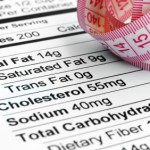 When it comes to nutritional analysis, food labels, sailing through U.S. and Canadian customs is easy, until it’s not. While both the U.S. and Canada participate in Codex, the international body that provides guidance on food safety and food label issues, each country is responsible for its own set of food label regulations. Unfortunately for those responsible for nutritional analysis, food labels, these regulations are not co-developed. Therefore, despite the two countries long history of harmonizing requirements for food labels, we cannot simply add French to a U.S. label and expect the product to effortlessly pass through Canadian customs.
When it comes to nutritional analysis, food labels, sailing through U.S. and Canadian customs is easy, until it’s not. While both the U.S. and Canada participate in Codex, the international body that provides guidance on food safety and food label issues, each country is responsible for its own set of food label regulations. Unfortunately for those responsible for nutritional analysis, food labels, these regulations are not co-developed. Therefore, despite the two countries long history of harmonizing requirements for food labels, we cannot simply add French to a U.S. label and expect the product to effortlessly pass through Canadian customs.
Food Labels: similarities and differences
The U.S. and Canada have different requirements for food labels and it is not possible to have food labels that satisfy the regulations in both countries. While bilingual (English/French) is an obvious Canadian requirement, there are several other country-specific requirements that span nutritional analysis, food labels formatting, and formulation. One simple example is nomenclature for Nutrition Facts — “Panels” in the U.S., “Tables” in Canada.
A sampling of other differences between the countries’ nutritional analysis, food labels include:
• Rounding rules – In Canada, trans fat has tighter reporting requirements than in the U.S.
• Units for reporting nutrients – U.S. uses International Units (IU) for Vitamin A whereas Canada uses Retinol Equivalents (RE)
• Daily Value for nutrients such as Vitamin C and Iron
• Different values from nutritional analysis can result for the same formulation
• Ingredient/allergen declarations – Baking powder requires a parenthetical listing of sub-ingredients in the U.S. but not on Canadian food labels
• Not every ingredient allowable in the U.S. is also allowable in Canada and vice versa; food colors can also be an issue
• Net content statement – 4 oz (113g) note no space before the “g” in the U.S., whereas it appears as 113 g with a space in Canada
• Nutrition/health claims – Canada defines “source of” as 5% or more of Daily Value but in the U.S. this is an undefined claim that cannot be used
Take a look at some one-page comparisons of food labels to see the nuances between U.S. and Canadian requirements.
• Allergens side-by-side comparison
• Ingredients side-by-side comparison
• Nutrition Facts side-by-side comparison
• Nutrition/health claims side-by-side comparison
Managing food label issues at the border
Food labels for imported products that must pass through customs are subject to more scrutiny than those that are domestically produced. In addition to customs agents at the border, there are also FDA (for U.S.) or CFIA (for Canada) officials who are reviewing food labels before products are allowed entry into the country.
So after all your nutritional analysis, food labels can still be rejected at the border. What do you do if your shipment is detained? Consider the following approaches:
1. Negotiate a one-time entry of the current product before the required change to your food labels
2. Consider over-stickering food labels to cover problematic areas and satisfy requirements
3. For issues involving ingredients or formulation, nutritional analysis, food labels can be guided by your product development expert to support compliance with federal standards
Food labeler beware! Understanding the nuances between U.S. and Canadian labeling and formulation requirements can be tricky. Don’t let your products be the ones detained at the border.
 About the author – Karen C. Duester
About the author – Karen C. Duester
President of Food Consulting Company
Karen Duester founded Food Consulting Company in 1993 to deliver nutrition analysis, food labeling and regulatory support to ensure 100% compliance with FDA regulations. With over 1,500 clients worldwide, Food Consulting Company functions as the virtual food label department for start-up and established food manufacturers, distributors, food importers, brokers, and restaurateurs.
The company’s promise is to deliver accurate, timely service providing everything that’s needed to go from recipe to retail – all with the confidence that it’s done right. Company information and a free email newsletter are available at http://www.foodlabels.com